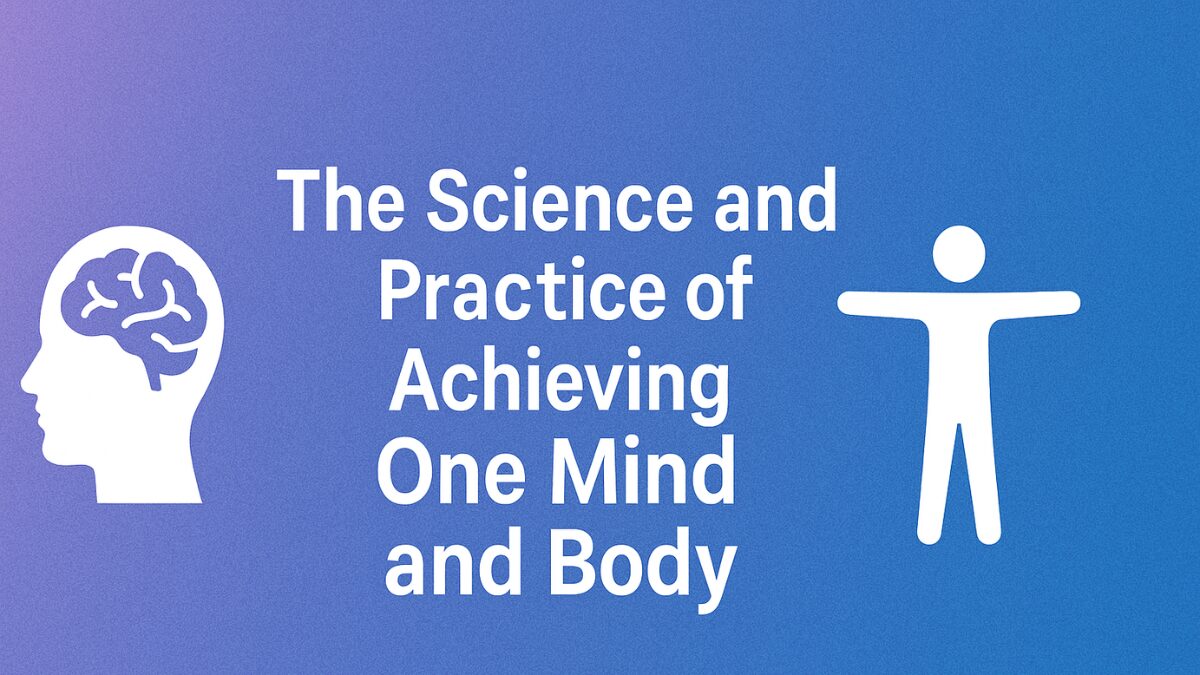Discover how to succeed in the booming holistic wellness industry. This guide explores business strategies, body-mind integration, trends, customer needs, and how to grow your body and mind business effectively.
Introduction
In today’s fast-paced world, people are increasingly turning to holistic wellness for both physical and mental health. The convergence of body and mind practices—like yoga, meditation, nutrition, fitness, life coaching, and alternative therapies—has given rise to a rapidly expanding industry. Maximizing your body and mind business: a comprehensive guide to holistic wellness market offers entrepreneurs, wellness coaches, and service providers a blueprint for thriving in this growing space.
This guide covers the market landscape, key business models, customer expectations, marketing strategies, revenue streams, and how to achieve sustainability in your wellness venture.
Understanding the Holistic Wellness Market

What is Holistic Wellness?
Holistic wellness refers to treating the whole person—body, mind, and spirit—rather than focusing on individual symptoms. It includes physical health, emotional well-being, spiritual balance, and lifestyle practices. Services often include:
- Nutrition and diet consulting
- Yoga and Pilates
- Mindfulness and meditation
- Energy healing (Reiki, chakra therapy)
- Life and health coaching
- Herbal and naturopathic medicine
Market Growth and Trends
The global holistic wellness market is currently valued at over $4.2 trillion and expected to keep growing. The shift in consumer behavior, especially after the COVID-19 pandemic, has fueled interest in self-care, stress reduction, and long-term wellness.
Key Trends:
| Trend | Description |
|---|---|
| Digital Wellness | Mobile apps and online coaching platforms are booming |
| Personalized Health | DNA-based diets, customized workout routines |
| Mindfulness Products | Guided meditations, calming music, journaling tools |
| Preventative Care | Emphasis on natural remedies and health maintenance |
Building a Strong Foundation for Your Wellness Business
Define Your Niche
The holistic wellness market is broad. To succeed, focus on a clear niche. Whether it’s corporate mindfulness programs, women’s hormone health, or digital fitness coaching—narrowing down your expertise builds trust and authority.
Craft Your Business Model
Choose the best structure for your services. Popular models include:
- Service-Based Model – One-on-one or group sessions (e.g., personal training, coaching)
- Product Sales – Supplements, oils, wellness journals, fitness tools
- Subscription Model – Members access online classes, content, or community
- Retreats & Events – Wellness retreats, workshops, conferences
- Hybrid Model – Combine digital products with physical services for wider reach
Legal & Operational Setup
For long-term success, ensure you:
- Register your business legally
- Get appropriate licenses and certifications
- Secure liability insurance
- Choose a convenient location or digital platform
- Build a website and customer booking system
Marketing Your Holistic Wellness Brand
Building Brand Identity
Your brand should communicate peace, empowerment, and transformation. Use calming colors, inspirational messages, and authenticity in every touchpoint—from your logo to your Instagram feed.
Digital Presence
In a digital-first world, your online image matters most. Use these key strategies:
- Content Marketing: Write blogs, create videos, and post infographics educating your audience
- SEO Optimization: Naturally use keywords like Maximizing your body and mind business: a comprehensive guide to holistic wellness market in your content
- Social Media: Showcase testimonials, wellness tips, and behind-the-scenes glimpses
- Email Marketing: Send newsletters with recipes, self-care guides, and program updates
Local & Community Marketing
Host free workshops or partner with local businesses like organic cafes or yoga studios. Collaborating strengthens your credibility and customer base.
Understanding and Meeting Customer Needs
Customers in this market seek transformation, balance, and lasting change. Here’s what they often look for:
- Authenticity and empathy
- Personalized approaches
- Accessibility (online/offline options)
- Clear benefits and outcomes
- Trust in your knowledge and credentials
Create customer personas to understand different segments. A busy working mom will have different wellness goals than a retired senior or a tech worker suffering from burnout.
Monetizing Your Body and Mind Wellness Brand

Key Revenue Streams
| Source | Details |
|---|---|
| Coaching Services | One-on-one or group sessions, life coaching, health coaching |
| Online Courses | Teach yoga, nutrition, meditation, etc., via platforms like Teachable or Thinkific |
| Affiliate Marketing | Promote wellness products you trust |
| eCommerce | Sell products like essential oils, teas, fitness equipment |
| Retreats & Events | Charge for immersive experiences focused on healing and growth |
Upselling and Cross-Selling
Introduce package deals or bundles. For example:
- Yoga class + guided meditation download
- Diet plan + herbal supplement combo
- Coaching package + journaling workbook
These not only increase revenue but provide added value to your clients.
Using Technology to Enhance Your Services
The right tools can streamline your operations and offer a better client experience.
Top Tools to Consider:
| Tool | Use Case |
|---|---|
| Zoom/Google Meet | Virtual classes & consultations |
| Acuity/Squarespace Scheduling | Appointment booking |
| Kajabi/Podia | Host digital courses and memberships |
| Canva | Create visuals for social media |
| MyFitnessPal | Integrate wellness tracking for clients |
Don’t be afraid to automate repetitive tasks like appointment reminders, billing, or onboarding emails. This frees up your time for deeper client engagement.
Holistic Certifications and Credibility
To stand out in the competitive wellness market, certification matters. Some globally recognized certifications include:
- IIN (Institute for Integrative Nutrition) – Health Coaching
- ACE (American Council on Exercise) – Personal Training
- Yoga Alliance Certification – Yoga Instructors
- Reiki Master Certification – Energy Healing
- Precision Nutrition – For diet and nutrition coaching
These certifications not only deepen your knowledge but also build trust with clients.
Challenges in the Holistic Wellness Market
Every business comes with hurdles. The most common ones in the wellness space are:
- Client retention due to inconsistent results
- Market saturation in some urban areas
- Lack of digital literacy among practitioners
- Pricing pressures and undervaluation
- Legal limitations in certain holistic practices
Overcoming these involves a combination of education, tech adoption, strategic branding, and consistent client communication.
Sustainability and Ethics in Your Business
Today’s conscious consumer values businesses that align with sustainability and ethical practices. Here are some ways you can integrate them:
- Use eco-friendly packaging
- Offer digital-only products to reduce waste
- Partner with ethically sourced suppliers
- Educate clients on sustainable living
Ethics also extend to your client relationships. Be transparent about what your services can and cannot achieve. Never make false health claims.
Future of the Holistic Wellness Industry
As technology evolves and people continue seeking balanced lives, the holistic wellness market will expand further. Innovations like AI-based fitness coaches, personalized meditation apps, and wellness wearables are just the beginning.

Staying current with trends, continuously learning, and evolving your business model will ensure long-term success.
FAQs: Maximizing Your Body and Mind Business
- What kind of insurance is needed for a holistic wellness business?
Liability insurance is essential, especially for physical services like yoga or massage therapy. - Can I run a wellness business completely online?
Yes, digital platforms allow you to coach, teach, and sell products globally. - Do I need a business partner to succeed in this field?
Not necessarily, but partnerships can help expand services or share operational duties. - How do I price my wellness services competitively?
Research local and online competitors, assess your skill level, and factor in business costs. - What are some passive income options in holistic wellness?
E-books, pre-recorded classes, and affiliate marketing are great passive income streams. - Is social media marketing more important than traditional marketing?
In most cases, yes. Social media provides targeted, low-cost promotion and client engagement. - Can I offer multiple services like yoga and coaching together?
Absolutely. In fact, combining services can offer more value to clients. - How important is customer feedback in this industry?
Extremely. Testimonials and reviews build trust and improve your offerings. - What platform is best for launching wellness courses?
Teachable, Thinkific, and Kajabi are leading platforms with user-friendly tools. - Do I need a license for selling wellness products online?
Depending on your country, you may need a vendor’s license or FDA compliance if selling consumables.
Conclusion
Maximizing your body and mind business: a comprehensive guide to holistic wellness market is more than a trend—it’s a future-proof career path for passionate wellness entrepreneurs. By understanding the market, offering authentic value, leveraging technology, and staying committed to your mission, you can thrive in this vibrant industry. Start small, think big, and always prioritize your client’s holistic transformation.
This guide has provided a structured path from startup planning to long-term growth. Whether you’re a coach, therapist, healer, or product creator—your journey toward holistic wellness success begins today.
also read: https://www.comfortglobalhealths.com/holistic-wellness-industry-analysis-opportunities-for-growth/










